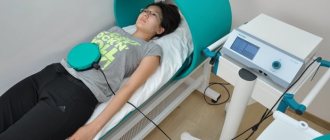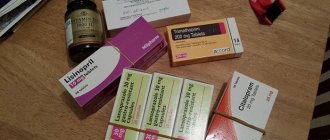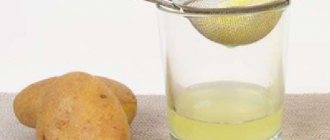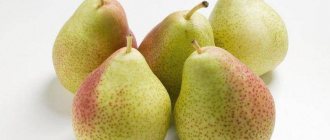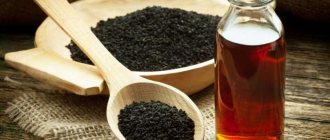Food is a source of energy and building material
To maintain his life, a person must eat food.
Food products contain all the substances necessary for life: water, mineral salts and organic compounds. Proteins, fats and carbohydrates are synthesized by plants from inorganic substances using solar energy. Animals build their bodies from nutrients of plant or animal origin. Nutrients that enter the body with food are building materials and at the same time a source of energy. During the breakdown and oxidation of proteins, fats and carbohydrates, a different but constant amount of energy is released for each substance, characterizing their energy value.
Digestion
Once in the body, food products undergo mechanical changes - they are crushed, moistened, split into simpler compounds, dissolved in water and absorbed. The set of processes by which nutrients from the environment pass into the blood is called digestion.
Enzymes play a huge role in the digestion process - biologically active protein substances that catalyze (accelerate) chemical reactions. During digestion processes, they catalyze reactions of hydrolytic breakdown of nutrients, but do not themselves change.
Main properties of enzymes:
- specificity of action - each enzyme breaks down nutrients only of a certain group (proteins, fats or carbohydrates) and does not break down others;
- act only in a certain chemical environment - some in alkaline, others in acidic;
- enzymes are most active at body temperature, and at a temperature of 70–100ºС they are destroyed;
- a small amount of enzyme can break down a large mass of organic matter.
Digestive secretion for digestion
The digestion process depends on the level of hydrochloric acid.
It includes:
- Proteolytic enzymes. These are pepsins, which break down proteins into lighter structures and then into amino acids.
- Non-proteolytic enzymes. With their help, carbohydrates and lipids are broken down. Sugars pass practically unchanged into the intestines. The enzyme lipase breaks down fat into triglycerides and fatty acids. But carbohydrates are hardly broken down in the stomach.
- Hydrochloric acid. It serves as an activator of pepsinogen, the precursor of pepsin. The acid also has a nonspecific immune function, destroying pathogenic microorganisms. It creates the pH of the stomach.
Digestive organs
The alimentary canal is a tube that runs throughout the body. The canal wall consists of three layers: outer, middle and inner.
The outer layer (serous membrane) is formed by connective tissue that separates the digestive tube from surrounding tissues and organs.
The middle layer (muscular layer) in the upper parts of the digestive tube (oral cavity, pharynx, upper part of the esophagus) is represented by striated muscle tissue, and in the lower parts - smooth muscle tissue. Most often, the muscles are located in two layers - circular and longitudinal. Thanks to the contraction of the muscular membrane, food moves through the digestive canal.
The inner layer (mucosa) is lined with epithelium. It contains numerous glands that secrete mucus and digestive juices. In addition to small glands, there are large glands (salivary, liver, pancreas) lying outside the digestive canal and communicating with them through their ducts. The following sections are distinguished in the digestive canal: oral cavity, pharynx, esophagus, stomach, small and large intestines.
Diagram of the digestive tract as part of the digestive system:
|
Digestion in the mouth
The oral cavity is the initial section of the digestive tract. It is bounded above by the hard and soft palate, below by the diaphragm of the mouth, and in front and on the sides by the teeth and gums.
The ducts of three pairs of salivary glands open into the oral cavity: parotid, sublingual and submandibular. In addition to these, there is a mass of small mucous salivary glands scattered throughout the oral cavity. The secretion of the salivary glands - saliva - moistens food and participates in its chemical changes. Saliva contains only two enzymes - amylase (ptialin) and maltase, which digest carbohydrates. But since food does not remain in the oral cavity for long, the breakdown of carbohydrates does not have time to complete. Saliva also contains mucin (a mucous substance) and lysozyme, which has bactericidal properties. The composition and quantity of saliva may vary depending on the physical properties of the food. During the day, a person secretes from 600 to 150 ml of saliva.
In the oral cavity, an adult has 32 teeth, 16 in each jaw. They grab food, bite it off and chew it.
Teeth consist of a special substance called dentin, which is a modification of bone tissue and has greater strength. The outside of the teeth is covered with enamel. Inside the tooth there is a cavity filled with loose connective tissue containing nerves and blood vessels.
Most of the oral cavity is occupied by the tongue, which is a muscular organ covered with mucous membrane. It is distinguished by the top, root, body and back, on which taste buds are located. The tongue is the organ of taste and speech. With its help, food is mixed during chewing and pushed through when swallowing.
Food prepared in the oral cavity is swallowed. Swallowing is a complex movement that involves the muscles of the tongue and pharynx. During swallowing, the soft palate rises and blocks the food from entering the nasal cavity. At this time, the epiglottis closes the entrance to the larynx. The bolus of food enters the pharynx, the upper part of the digestive canal. It is a tube, the inner surface of which is lined with mucous membrane. Through the pharynx, food enters the esophagus.
The esophagus is a tube about 25 cm long, which is a direct continuation of the pharynx. No food changes occur in the esophagus, since digestive juices are not secreted in it. It serves to carry food into the stomach. The movement of the food bolus through the pharynx and esophagus occurs as a result of contraction of the muscles of these sections.
Composition and properties of gastric juice
Buy natural gastric juice at the pharmacy. In the absence of natural gastric juice, use pepsin (yellowish powder), which can also be purchased at the pharmacy. Dissolve 1 g of pepsin in 500 cm3 of weak hydrochloric acid (0.2%).
Neutralize some of the gastric juice by adding a few drops of a 10% sodium hydroxide solution, shake thoroughly and use litmus paper to determine the reaction. It is necessary to achieve complete neutralization of the juice.
Prepare an egg white solution. To do this, take two raw chicken eggs and separate the white from the yolk. Drain the whites into a glass and add 200 cm3 of water. Add half a teaspoon of table salt (to better dissolve the protein). Filter this cloudy liquid through a thin layer of cotton wool placed in a funnel. The liquid obtained after filtration is the protein solution.
Take six test tubes and number them. Pour 1-2 cm3 of protein solution into each test tube. Heating each test tube over the flame of an alcohol lamp, fold the protein. This produces white flakes of insoluble protein. Place all test tubes in a glass of cold water. After 10-15 minutes, pour 2-3 cm3 of water into test tube No. 1, and add 2-3 cm3 of acidic gastric juice into test tube No. 2. Place both test tubes in a glass of water heated to 37-38° C. After 10 minutes, remove the test tubes from the warm water and note what changes have occurred in the test tubes.
Now pour protein and acidic gastric juice into test tube No. 3, protein and pre-boiled gastric juice into test tube No. 4, and protein and neutralized gastric juice into test tube No. 5. Place test tubes No. 3, 4.5 in a glass with hot water (water temperature 37-38°C). Pour protein and acidic gastric juice into test tube No. 6. Place this test tube in a glass with ice, snow or cold water.
After 15-20 minutes, note what changes have occurred with the protein in test tubes No. 3, 4, 5, 6.
Now do this experiment. Bring 4-5 cm3 of natural gastric juice to an alkaline reaction by adding calcium carbonate or a weak solution of bicarbonate of soda. Filter the solution.
Number the three test tubes. Pour 0.5 cm3 of acidic gastric juice into test tube No. 1. Pour 0.5 cm3 of alkaline gastric juice into test tubes No. 2 and 3. Boil the contents of test tube No. 3 thoroughly. Add 5-6 cm3 of milk to all test tubes and place in a water bath at a temperature of 38-40 ° C. Observe the progress of the experiment. In which test tube will the milk curd first? Why is there no curdling of milk in test tube No. 3?
Human gastric juice is a colorless, acidic liquid (pH 0.8-1.0), with a high content of hydrochloric acid and a small amount of mucus. A person produces 1.2-2 liters of juice per day. Gastric juice contains two protein enzymes - pepsin
and
chymosin.
Pepsin is produced by the gastric glands in an inactive form and is activated by hydrochloric acid. Pepsin breaks down proteins into albumoses and peptones, whose molecules consist of four or eight amino acids. Pepsin easily breaks down the proteins of meat and eggs, and very slowly the proteins of cartilage and tendons.
Chymosin, or rennet, causes milk to curdle in the stomach. Chymosin is found in the gastric juice of children, especially during breastfeeding. In adults, milk curdling occurs under the influence of pepsin. This is facilitated by hydrochloric acid in the stomach. In addition, hydrochloric acid causes proteins to swell, which promotes their better digestion.
lipase contained in gastric juice
breaks down fats into glycerol and fatty acids. But it only acts on fats that are in an emulsified state. There are few food products containing emulsified fat. This is mainly milk, so gastric lipase in adults is not of great importance in the digestion of fats. In infants, gastric lipase breaks down up to 25% of milk fat. However, it should be noted that the fat in mother's milk is broken down not only by gastric lipase, but also by the lipase of the mother's milk itself. The breakdown of fat in the stomach of artificially fed babies is therefore always slower than with breastfeeding. Cow's milk contains little lipase.
If you apply gastric juice to a piece of the mucous membrane of a “foreign” stomach, it will digest it. Why doesn't the stomach self-digest? Some researchers assign an important role in protecting the gastric mucosa from digestion by its own gastric juice to gastric mucus, which envelops the mucous membrane. There are researchers who believe that the cells of the gastric mucosa produce a special substance - antipepsin, which suppresses the effect of pepsin when it comes into contact with the mucous membrane.
The following is cited as a possible mechanism explaining why the stomach does not digest itself: the cells of the gastric mucosa have a slightly alkaline reaction, and pepsin is active in an acidic environment.
Gastric juice contains HCl, which is known as one of the most destructive acids. Its concentration when released from the gastric mucosa is such that it is capable of dissolving zinc and is lethal to the cell. However, in the stomach, HCl usually performs only useful functions: it kills bacteria in swallowed food and liquid, softens fibrous foods, and helps activate the digestive enzyme pepsin. It is believed that stomach cells are protected from self-digestion by a complex physicochemical barrier, the nature of which is not yet entirely clear.
The danger to the stomach undoubtedly lies in HCl, in particular its hydrogen ions. The barrier is located in the superficial layer, consisting of tall columnar epithelial cells. They are closely connected by their tops, forming a reliable and dense barrier.
The mucous membrane has another protective mechanism that protects the stomach from self-digestion.
Mature cells of the gastric mucosa (as well as the mucous membrane of the entire digestive tract) continuously desquamate, or flake off, from the surface. New ones take their place.
In the human stomach, about half a million cells are usually exfoliated in a minute. In other words, the surface of the gastric mucosa is renewed every 3 days. Thanks to this rapid renewal, the stomach wall can repair even very severe damage to the mucosal barrier within a few days or even hours.
The gastric mucosa is usually impermeable to food ingredients and liquids. The only substance that easily penetrates the barrier of the gastric mucosa is ethyl alcohol, a small molecule of which can dissolve in both fat and water. Although alcohol by itself does not cause barrier destruction, when combined with other substances it can do so.
Recent experiments have shown that salicylic or acetylsalicylic acid (aspirin) can penetrate the mucosal barrier and cause bleeding.
Experiments show that if there is alcohol in the stomach, the ability of salicylate to destroy the mucosal barrier increases. Clarifying this issue is very important, since sometimes pepsin begins to digest the wall of its stomach, resulting in ulcers of varying sizes.
Digestion in the stomach
The stomach is the most expanded section of the digestive tube with a capacity of up to three liters. The size and shape of the stomach changes depending on the amount of food taken and the degree of contraction of its walls. At the point where the esophagus flows into the stomach and where the stomach passes into the small intestine, there are sphincters (squeezers) that regulate the movement of food.
The mucous membrane of the stomach forms longitudinal folds and contains a large number of glands (up to 30 million). The glands consist of three types of cells: main (producing enzymes of gastric juice), parietal (secreting hydrochloric acid) and accessory (secreting mucus).
Contractions of the stomach walls mix food with juice, which promotes better digestion. Several enzymes are involved in the digestion of food in the stomach. The main one is pepsin. It breaks down complex proteins into simpler ones, which are further processed in the intestines. Pepsin acts only in an acidic environment, which is created by hydrochloric acid in gastric juice. Hydrochloric acid plays a major role in the disinfection of stomach contents. Other gastric juice enzymes (chymosin and lipase) are able to digest milk protein and fats. Chymosin curdles milk, so it stays in the stomach longer and undergoes digestion. Lipase, present in small quantities in the stomach, breaks down only the emulsified milk fat. The action of this enzyme in the stomach of an adult is weakly expressed. There are no enzymes that act on carbohydrates in gastric juice. however, a significant portion of the food's starch continues to be digested in the stomach by salivary amylase. The mucus secreted by the glands of the stomach plays an important role in protecting the mucous membrane from mechanical and chemical damage and from the digestive action of pepsin. The glands of the stomach secrete juice only during digestion. In this case, the nature of juice secretion depends on the chemical composition of the food consumed. After 3-4 hours of processing in the stomach, the food gruel enters the small intestine in small portions.
How is food broken down in the stomach?
With low acidity, protein foods are poorly digested.
Nutrients come in crushed form from the esophagus. In this case, some of the carbohydrates are already digested by salivary amylase. But only in the stomach are protein and fatty substances changed and digested. To process them, the secreting glands actively secrete proteolytic and lipolytic enzymes. Pepsin, which breaks down proteins, is formed from inactive pepsinogen under the influence of hydrochloric acid. Therefore, protein foods are digested well only with sufficient acidity. Basically, the enzyme lipase, which breaks down fats, is produced in greater quantities in childhood. In infants, it breaks down casein in breast milk.
Small intestine
The small intestine is the longest part of the digestive tube, reaching 6–7 meters in an adult. It consists of the duodenum, jejunum and ileum.
The excretory ducts of two large digestive glands - the pancreas and liver - open into the initial section of the small intestine - the duodenum. Here the most intensive digestion of food gruel occurs, which is exposed to the action of three digestive juices: pancreatic, bile and intestinal.
The pancreas is located behind the stomach. It distinguishes between the apex, body and tail. The apex of the gland is surrounded in a horseshoe shape by the duodenum, and the tail is adjacent to the spleen.
Gland cells produce pancreatic juice (pancreatic). It contains enzymes that act on proteins, fats and carbohydrates. The enzyme trypsin breaks down proteins into amino acids, but is active only in the presence of the intestinal enzyme enterokinase. Lipase breaks down fats into glycerol and fatty acids. Its activity increases sharply under the influence of bile produced in the liver and entering the duodenum. Under the influence of amylase and maltose in pancreatic juice, most food carbohydrates are broken down into glucose. All pancreatic juice enzymes are active only in an alkaline environment.
In the small intestine, food gruel undergoes not only chemical, but also mechanical processing. Thanks to the pendulum-like movements of the intestine (alternate lengthening and shortening), it mixes with digestive juices and liquefies. Peristaltic movements of the intestines cause contents to move towards the large intestine.
The liver is the largest digestive gland in our body (up to 1.5 kg). It lies under the diaphragm, occupying the right hypochondrium. The gallbladder is located on the lower surface of the liver. The liver consists of glandular cells that form lobules. Between the lobules there are layers of connective tissue in which nerves, lymphatic and blood vessels and small bile ducts pass.
Bile, produced by the liver, plays a large role in the digestion process. It does not break down nutrients, but prepares fats for digestion and absorption. Under its action, fats break up into small drops suspended in liquid, i.e. turn into an emulsion. In this form they are easier to digest. In addition, bile actively influences absorption processes in the small intestine, enhances intestinal motility and the secretion of pancreatic juice. Despite the fact that bile is produced continuously in the liver, it enters the intestines only when eating. Between periods of digestion, bile is collected in the gallbladder. Through the portal vein, venous blood flows into the liver from the entire digestive canal, pancreas and spleen. Toxic substances that enter the blood from the gastrointestinal tract are neutralized here and then excreted in the urine. In this way, the liver carries out its protective (barrier) function. The liver is involved in the synthesis of a number of important substances for the body, such as glycogen, vitamin A, and influences the process of hematopoiesis, the metabolism of proteins, fats, and carbohydrates.
Functions of the stomach
The digestive functions of the stomach include:
- accumulation of food and its preservation for several hours during the period of digestion (deposition);
- mechanical grinding and mixing of incoming food with digestive secretions;
- chemical processing of proteins, fats, carbohydrates;
- advancement (evacuation) of food mass into the intestines.
Secretory function
The chemical processing of incoming food is ensured by the secretory function of the organ. This is possible due to the activity of the glands, which are located on the inner mucous membrane of the organ. The mucous membrane has a folded structure, with many pits and tubercles, its surface is rough, covered with many villi of different shapes and sizes. These villi are the digestive glands.
Most secretory glands have the form of cylinders with external ducts through which the biological fluids they produce enter the stomach cavity. There are several types of such glands:
- Fundal . The main and most numerous formations occupy most of the area of the body and fundus of the stomach. Their structure is complex. The glands are formed by three types of secretory cells:
- the main ones are responsible for the production of pepsinogen;
- lining or parietal, their task is the production of hydrochloric acid;
- additional – produce mucoid secretion.
- Cardiac glands . The cells of these glands produce mucus. The formations are located in the upper, cardiac section of the stomach, in the place that first encounters food coming from the esophagus. They produce mucus, which facilitates the sliding of food through the stomach and, by covering the surface of the mucous membrane of the organ with a thin layer, performs a protective function.
- Pyloric glands . They produce a small amount of mucous secretion with a weak alkaline reaction, partially neutralizes the acidic environment of gastric juice before evacuating the food mass into the intestinal lumen. Parietal cells in the glands of the pyloric region are present in small quantities and take almost no part in the digestion process.
Nutrient Absorption
In order for the amino acids, simple sugars, fatty acids and glycerol resulting from the breakdown to be used by the body, they must be absorbed. These substances are practically not absorbed in the oral cavity and esophagus. Water, glucose and salts are absorbed in the stomach in small quantities; in the large intestines - water and some salts. The main processes of nutrient absorption occur in the small intestine, which is quite well adapted to carry out this function. The mucous membrane of the small intestine plays an active role in the absorption process. It has a large number of villi and microvilli, which increase the absorption surface of the intestine. The walls of the villi contain smooth muscle fibers, and inside them there are blood and lymphatic vessels.
Villi take part in the absorption of nutrients. By contracting, they promote the outflow of blood and lymph, rich in nutrients. When the villi relax, fluid from the intestinal cavity again enters their vessels. The products of the breakdown of proteins and carbohydrates are absorbed directly into the blood, and the bulk of digested fats are absorbed into the lymph.
Mechanism of gastric juice secretion
In order for gastric juice to begin to separate, it is not at all necessary that food enters the stomach; It is enough that it enters the oral cavity. This can best be seen by pretending to feed the dog.
Rice. 98.
Curve of the separation of gastric juice from an isolated ventricle in a dog after feeding meat, bread and milk (according to I.P. Pavlov).
The secretion of gastric juice in response to irritation of the taste buds of the oral cavity occurs reflexively. This is an innate, unconditioned reflex. Food entering the oral cavity irritates the endings of the taste nerves located in the mucous membrane of the mouth and on the tongue. The excitation that arises here is carried to the medulla oblongata, from where the excitation reaches the gastric glands along the secretory nerves, and although food does not enter the stomach during imaginary feeding, pure juice flows from the stomach through the opening of the fistula tube.
The secretory nerve for the gastric glands is the vagus nerve. If you cut the vagus nerves in a dog, then imaginary feeding will no longer cause the separation of gastric juice.
Sympathetic fibers also connect to the gastric glands. Irritation under special conditions of the end of the cut sympathetic nerve causes a slight secretion of juice. However, sympathetic nerves are of great importance in regulating the accumulation of enzymes in the secretory cells of the stomach.
Only the integrity of both nerves - both the vagus and the sympathetic - ensures normal juice secretion.
The secretion of gastric juice begins not only when food irritates the receptors of the oral cavity. Preparing for food, talking about food, the sight and smell of it cause the secretion of acidic, enzyme-rich gastric juice. This occurs as a result of the implementation of a conditioned reflex to food. Thanks to conditioned reflexes, the juice begins to separate some time before eating. I. P. Pavlov called this juice appetizing
or
ignition.
Appetizing juice prepares the stomach in advance for digesting food and is an important condition for its normal functioning.
Typically, the act of eating always begins with the sight and smell of food, conditioned stimuli for the gastric glands. The food that subsequently enters the oral cavity acts as an unconditioned stimulant, stimulating the taste buds of the oral mucosa.
Juice secretion caused by the act of eating is a complex reflex
phase of gastric secretion. It is called complex reflex because during this phase gastric juice is separated due to a complex of unconditioned and conditioned reflexes.
Under the influence of various influences, gastric secretion can be inhibited. As soon as the dog shows the cat while eating, the secretion of gastric juice stops. The sight of stale food, its unpleasant smell, untidy surroundings, and reading while eating lead to inhibition of gastric secretion, which reduces the digestive effect of juices and makes food less digestible.
The complex-reflex secretion of gastric juice lasts only 1.5-2 hours. Under normal conditions, gastric secretion continues for 6-10 hours after eating. Consequently, the complex-reflex phase cannot explain all the patterns of gastric juice secretion. However, this is the starting phase and largely determines the nature of further juice secretion.
When food enters the stomach, gastric juice continues to be secreted as long as there is digestible food in the stomach.
Due to what mechanisms is gastric juice now separated? Food entering the stomach mechanically irritates the receptors located in the gastric mucosa; the stimulation is transmitted to the central nervous system and from there it reaches the gastric glands along the vagus nerves. If the vagus nerves are cut, mechanical irritation of the stomach walls no longer causes secretion of juice.
Experience on dogs, as well as observations on humans in the laboratory headed by K. M. Bykov, showed that mechanical irritation of the stomach wall in a dog with pieces of rubber, glass beads, and in a person with a rubber balloon inserted into the stomach cavity can cause quite strong secretion of juice. In humans, the separation of gastric juice due to mechanical irritation of the stomach wall begins after 5-10 minutes, in dogs - somewhat later. The separation of gastric juice during mechanical irritation of the gastric mucosa is a reflex process regulated by the nervous system. But not only due to mechanical irritation of the stomach, juice is separated when food is in the stomach. An important role here belongs to chemical substances that circulate in the blood during digestion and stimulate gastric secretion through the humoral route. If a dog is fed with meat or milk and at the height of secretion, 200 cm3 of blood is taken from it and transfused to another dog whose gastric glands are at rest, then after the injection of blood the second dog will begin to secrete gastric juice. It can be understood this way. During digestion, chemicals and digestion products enter the bloodstream from the gastrointestinal tract. They are carried by blood to the glands of the stomach and cause their activity.
Particularly active in this regard are the substances contained in meat broth, cabbage broth, decoctions of fish, mushrooms, and vegetables.
In addition, under the influence of hydrochloric acid or digestion products, a special hormone is formed in the gastric mucosa - gastrin,
which is absorbed into the blood and enhances the secretion of the gastric glands.
The separation of gastric juice due to mechanical irritation of the gastric mucosa, as well as due to chemicals absorbed from the stomach into the blood, constitutes a neurohumoral
secretion phase.
Both phases of gastric secretion—complex reflex and neurohumoral—are interconnected. Thus, the abundant secretion of gastric juice in the complex-reflex phase leads to accelerated formation and absorption of gastrin, which, in turn, causes an increase in the neurohumoral phase of secretion.


